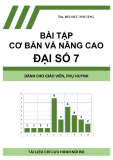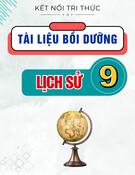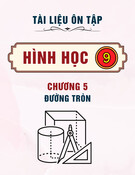
NHÓM CH ĐI M 9: Ủ Ể
TRANSPORT
VOCABULARY SET 34:
BICYCLES
Vocabulary:
1. adopt (v): áp d ngụ
2. allocate (v): phân b , chố ỉ đnhị
3. commute (v): di chuy n, đi l i đu đn (ví d : vi c đi làm h ngể ạ ề ặ ụ ệ ằ ngày)
4. convince (v): thuy t ph c - convincing (adj): có s c thuy tế ụ ứ ế ph cụ
5. dedicated (adj): dành riêng cho, t nậ t yụ
6. hesitate (v): do d , ng nự ầ ng iạ
7. impose a (heavy) tax on (collocation): đánh thu (n ng) vào m t hàngế ặ ặ gì
8. overreliance (n): quá phụ thu cộ
9. overdependence (n): quá d a d m, quá phự ẫ ụ thu cộ
10. prevalent (adj): phổ bi nế
11. prominent (adj): n iổ b tậ
12. promote (v): khuy n khích, đy m nh, xúcế ẩ ạ ti nế
13. shortage (n): thi uế h tụ
Exercises:
Task 1: Write sentences from given cues. Make changes to the cues when needed.
1. government / programme / grow / cash crops / export / be / double-edged sword / since / it /
create / local food shortage.
2. he / move / house / three time / just / find / convenient location / commute / work.
3. agriculture / company / fail / convince / consumers / that / GM (genetically modified) foods /
safe.
4. recruiter / surprised / see / him / hesitate / accept / job offer.
5. overdependence / use / pain killers / lead / drug addict.
Task 2: Translate from Vietnamese to English

1. Nh s phát tri n c a các hãng hàng không giá r , vi c đi du l ch n c ngoài tr nên ph ờ ự ể ủ ẻ ệ ị ướ ở ổ
bi n h n, đc bi t v i các b nế ơ ặ ệ ớ ạ tr .ẻ

2. Thu c lá b đánh thu r t n ng, tuy nhiên, đi u này có v không hi u qu trong vi c gi m thi u s ố ị ế ấ ặ ề ẻ ệ ả ệ ả ể ố
ng i hútườ thu c.ố
3. Chính ph nên đóng vai trò n i b t h n trong vi c khuy n khích và b o v nhânủ ổ ậ ơ ệ ế ả ệ quy n.ề
4. Vé cho bu i hòa nh c s h n ch s l ng và ch đc phát cho nh ng ai đăng kíổ ạ ẽ ạ ế ố ượ ỉ ượ ữ s m.ớ
5. Vì nghiên c u c a chúng tôi t i th i đi m hi n t i ch a tr l i đc câu h i nào cho v n đ ứ ủ ớ ờ ể ệ ạ ư ả ờ ượ ỏ ấ ề
nghiên c u đ ra tr c đó, chúng tôi c n áp d ng m t cách ti p c nứ ề ướ ầ ụ ộ ế ậ khác.
Task 3: Fill in the blanks with suitable words/phrases
adopt (v) impose a (heavy) tax on (collocation)
allocate (v) overreliance (n) - overdependence (n)
commute (v) prevalent (adj)
convince (v) - convincing (adj) prominent (adj)
dedicated (adj) promote (v)
hesitate (v) shortage (n)
Nowadays people use bicycles less as a form of transport. Why is that? What can we do to
encourage people to use bicycles more?
Cycling has long been considered an effective way of improving physical health and reducing the risk
of obesity. However, in recent decades, there has been a 1 trend for people to use bicycles
less to 2 . This trend could be ascribed to a few reasons, and definite actions must be taken to
3 the use of bicycles.
There are obvious reasons as to why people 4 to choose bicycles as a form of transport.
The most 5 reason is the 6 on modern means of transport, such as cars and
motorbikes. These modes of transport are faster and more suitable for long journeys than bicycles.
Another 7 reason is that in many places in the world, including Vietnam, there are no
8 cycling paths for bicycles. This means that cyclists in these regions would have to ride in
the same lane as motor vehicles, which is without doubt a dangerous practice.
To boost the use of bicycles, the government should 9 both of the following measures.
First, the government should 10 motor vehicles. This tax would discourage people from
using motor vehicles, and thus encourage them to switch to bicycles, a human-powered land vehicle.
Second, the government should 11 more money to the construction of cycling paths for
citizens. If a system of cycling paths was well-developed, people would consider bicycles a safe and
convenient mode of transport.

In conclusion, the unpopularity of bicycles could be attributed to the 12 on modern
means of transport and the 13 of dedicated cycling paths. To encourage people to cycle
more, the government should therefore introduce a tax on motor vehicles and invest money in building
dedicated paths for cyclists.
281 words, written by Tu Pham

Key:
Task 1:
1. The government's programme to grow cash crops for export is a double-edged sword because it has
created a local food shortage.
2. He has moved his house three times just to find a convenient location to commute to work.
3. Agricultural companies have failed to convince consumers that GM foods are safe.
4. The recruiters were surprised to see him hesitating to accept the job offer.
5. Overdependence on using pain killers can lead to drug addiction.
Task 2: Answers may vary
1. Thanks to the development of low-cost airlines, travelling abroad has now become more prevalent,
especially among young people.
2. Very high taxes have been imposed on cigarettes; however, this does not seem to be effective in
reducing the number of smokers.
3. The government should be playing a more prominent role in promoting and protecting human rights.
4. Tickets to concerts are limited, and will only be allocated to those who apply early.
5. Since our research so far has not produced any answers to the research questions previously discussed,
we need to adopt a different approach.
Task 3
Cycling has long been considered an effective way of improving physical health and reducing the risk
of obesity. However, in recent decades, there has been a (1) prevalent trend for people to use bicycles
less to (2) commute. This trend could be ascribed to a few reasons, and definite actions must be taken to
(3) promote the use of bicycles.
There are obvious reasons as to why people (4) hesitate to choose bicycles as a form of transport. The
most (5) prominent reason is the (6) overreliance on modern means of transport, such as cars and
motorbikes. These modes of transport are faster and more suitable for long journeys than bicycles.
Another (7) convincing reason is that in many places in the world, including Vietnam, there are no (8)
dedicated cycling paths for bicycles. This means that cyclists in these regions would have to ride in the
same lane as motor vehicles, which is without doubt a dangerous practice.
To boost the use of bicycles, the government should (9) adopt both of the following measures. First,
the government should (10) impose a heavy tax on motor vehicles. This tax would discourage people
from using motor vehicles, and thus encourage them to switch to bicycles, a human-powered land vehicle.
Second, the government should (11) allocate more money to the construction of cycling paths for
citizens. If a system of cycling paths was well- developed, people would consider bicycles a safe and
convenient mode of transport.
In conclusion, the unpopularity of bicycles could be attributed to the (12) overdependence on modern
means of transport and the (13) shortage of dedicated cycling paths. To encourage people to cycle more,
the government should therefore introduce a tax on motor vehicles and invest money in building
dedicated paths for cyclists.
281 words, written by Tu Pham





![Bài tập so sánh hơn và so sánh nhất của tính từ [kèm đáp án/mới nhất]](https://cdn.tailieu.vn/images/document/thumbnail/2025/20250808/nhatlinhluong27@gmail.com/135x160/77671754900604.jpg)
![Tài liệu tham khảo Tiếng Anh lớp 8 [mới nhất/hay nhất/chuẩn nhất]](https://cdn.tailieu.vn/images/document/thumbnail/2025/20250806/anhvan.knndl.htc@gmail.com/135x160/54311754535084.jpg)

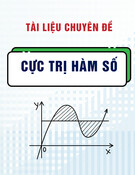
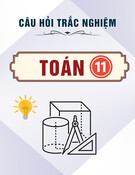

![Tài liệu Lý thuyết và Bài tập Tiếng Anh lớp 6 [Mới nhất]](https://cdn.tailieu.vn/images/document/thumbnail/2025/20250802/hoihoangdang@gmail.com/135x160/18041754292798.jpg)
